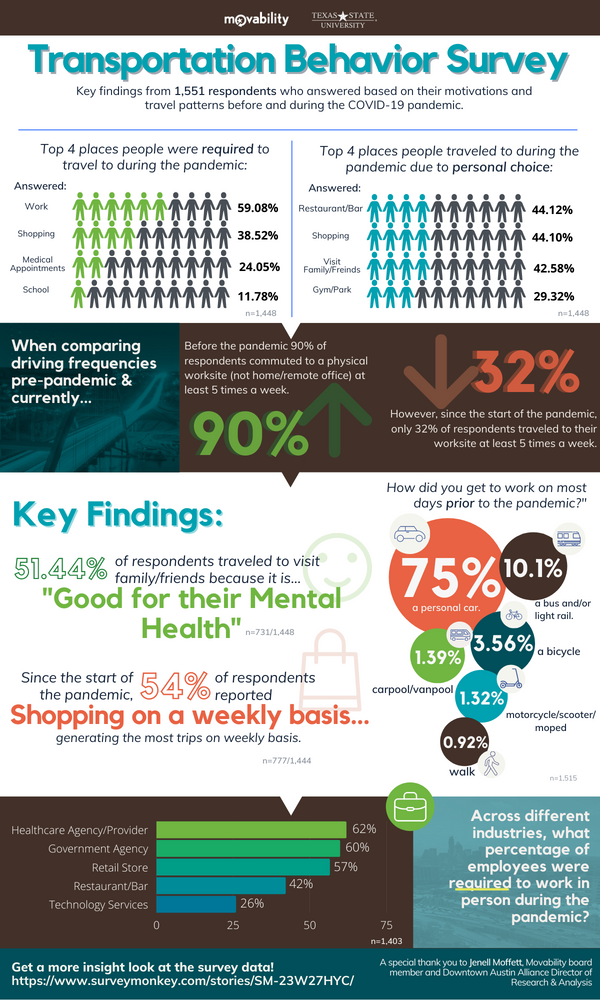
COVID-19 TRANSPORTATION BEHAVIOR SURVEY
From early February to mid-March 2021 Movability surveyed individuals about the motivations behind their travel choices during the pandemic. The purpose of this study was to provide decision-makers, business leaders, and policymakers with data explaining where and why there is so much traffic, even as traditional commute patterns were disrupted.

Covid-19 Telework Survey
The coronavirus pandemic escalated into a public health crisis faster than communities around the world were prepared for. The unprecedented nature of the past two months has led to the implementation of a series of health regulations which have impacted businesses and organizations of all sizes, across all industries.
A rapid shift to teleworking has occurred in Central Texas. In order to understand how these changes have affected the lives of community members, Movability & Texas State University's Translational Health Research lab conducted a survey in April 2020 asking people to reflect on how working from home is working for them.

2019 Commuter Research Study
Together with the Translational Health Research Initiative at Texas State University, Movability launched a pilot project at the end of 2019 to show the data behind how people who work in Austin's Central Business District get to and from work. Through a survey of downtown employees, the project tracked the use of commute modes of more than 600 people over a period of 60 days, starting November 13, 2019.
As Central Texas grows and traffic congestion increases, the region is also seeing more mobility options and a growing awareness among employers that the drive-alone commute is too costly to sustain.
While some data exists about the number of users for different travel modes, it's limited. This pilot study was huge step in getting a more comprehensive picture of how downtown employees commute.
An initial analysis of the data revealed a 60% drive-alone rate among participants - high, but not as high as previous estimates from the City, which showed a 74% drive-alone rate. This indicates that downtown employers, many of whom are Movability members and already proactively providing commute programs, are connecting with alternative means of transportation.
See the slides presented at the Feb. 5, 2020 Mayor's Mobility Breakfast for more information.
